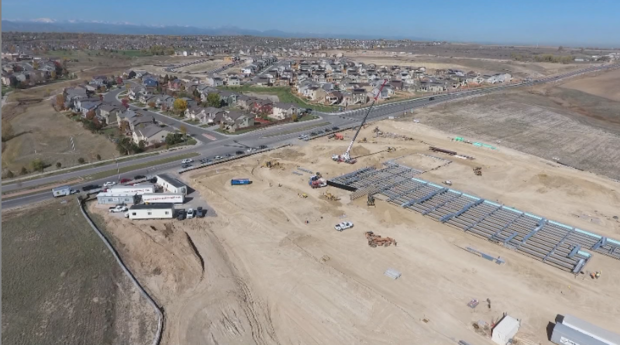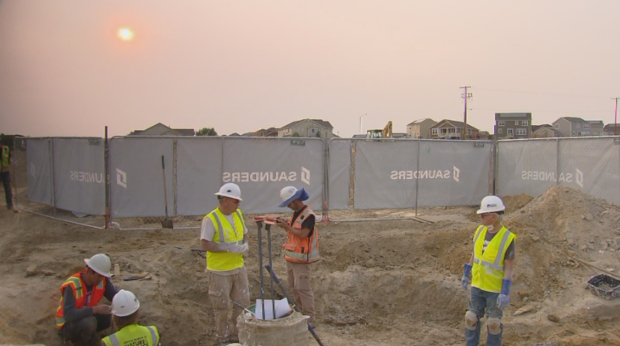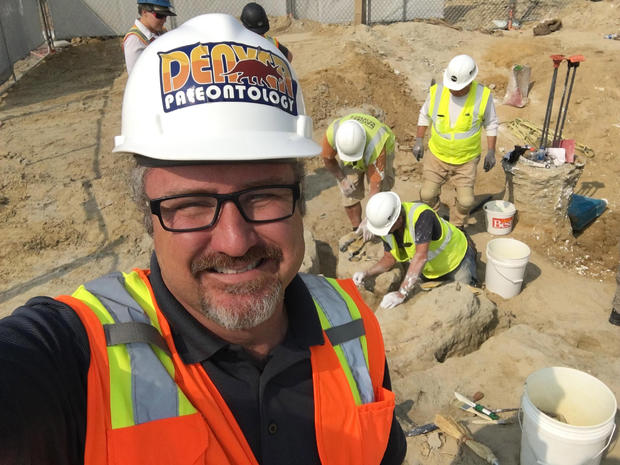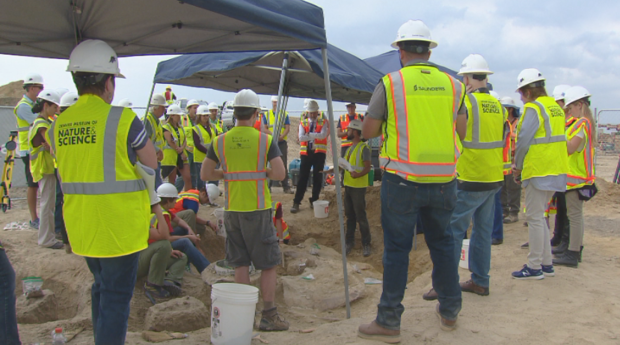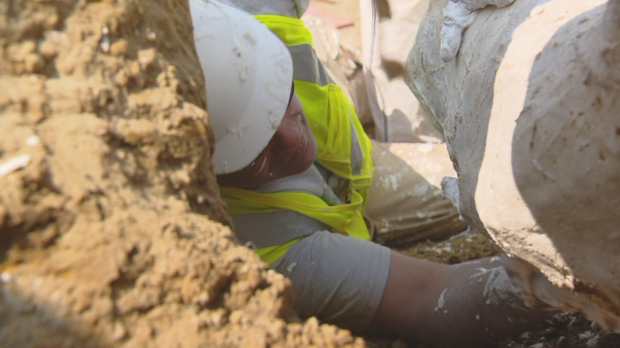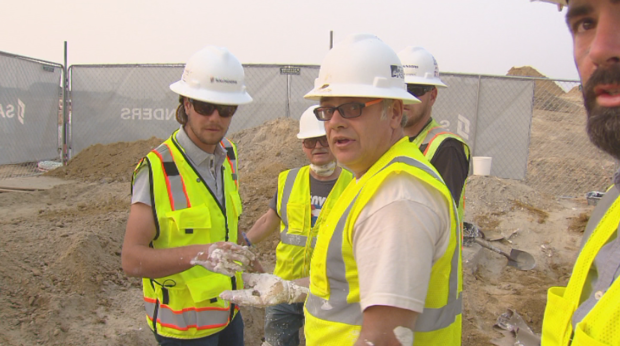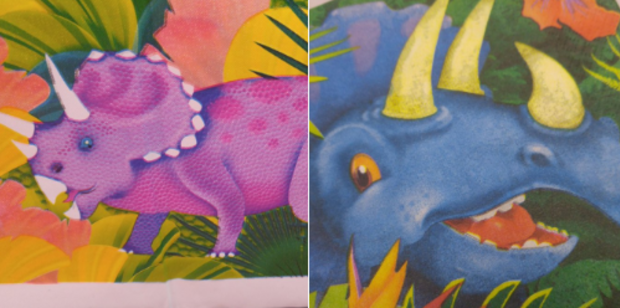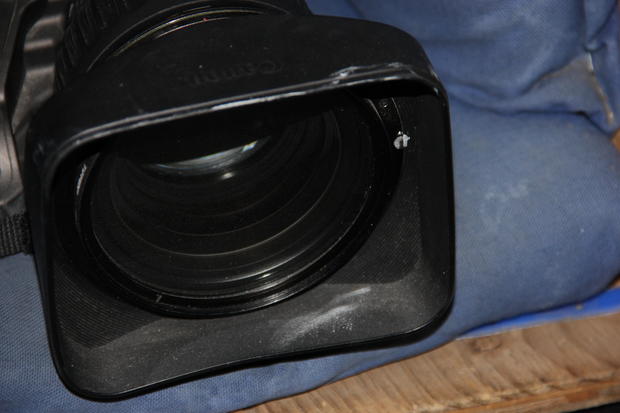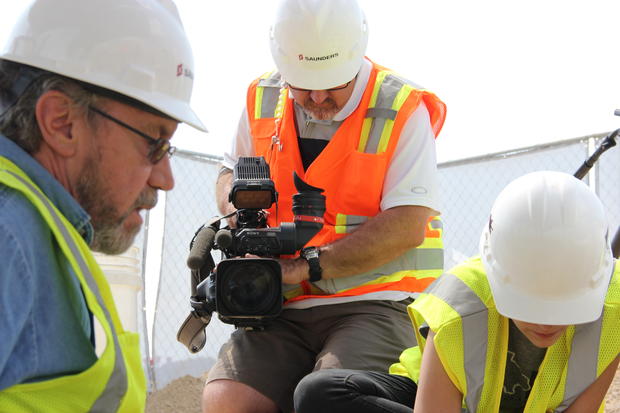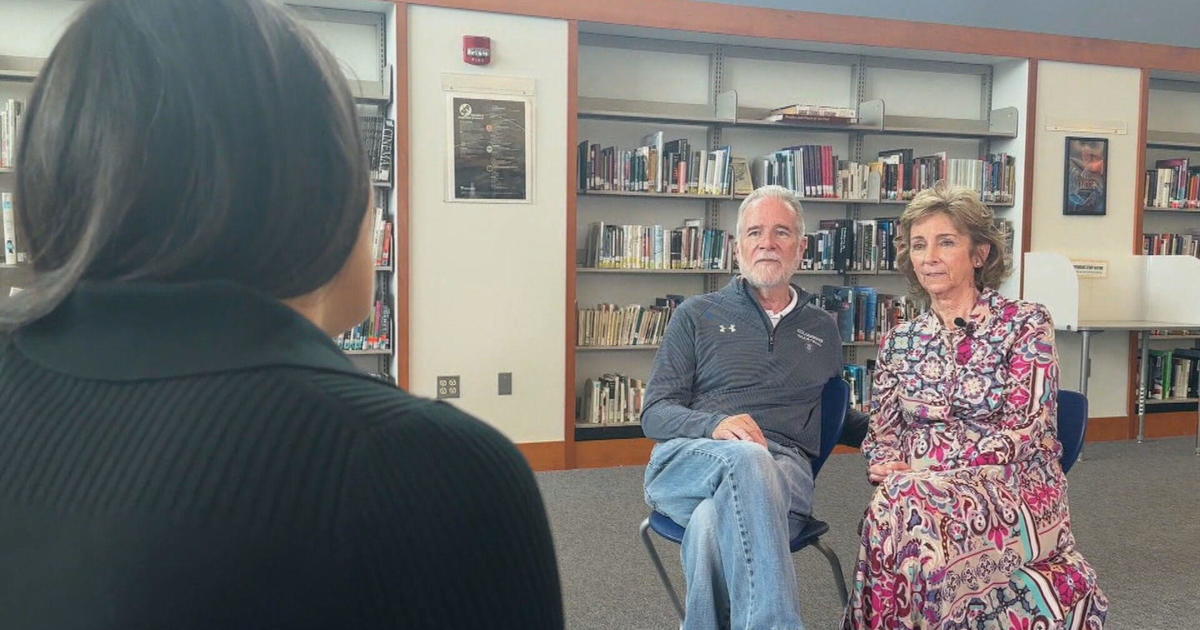Photojournalist's Notebook: Uncovering and Covering A Dinosaur In My 'Backyard'
By Photojournalist Mark Neitro
THORNTON, Colo. (CBS4) - "They think they found a dinosaur up in Thornton." Not the words I expected to hear coming from the assignment desk. Usually, it's "there's a house fire in Littleton," "fatal car crash in Aurora" and many stories of triumph and despair.
My first thought was, "Hey, I live in Thornton!" My family and I just moved into the neighborhood a few months earlier from Westminster. I checked the map and we only live about 4 miles away from the dig site.
It was August and the temps were in the mid-90s.
Since this was an active construction site, we had to wear safety vests and hard hats. Luckily, I was able to wear short-sleeved shirts and shorts to help with the heat.
Trust and friendship
As a journalist, I meet new people every day. If I meet someone while covering a story I'm usually in-and-out of their life in about 10 minutes.
But, this was different. I would end up spending 10 days at the dig site. Morning to evening, even on my days off. I was surrounded by paleontologists, volunteers, construction workers, police, fire and Thornton city officials.
In the beginning it was tense. Stan Bush and I were entering a busy construction site, fenced off from the rest of Thornton. The dig site was inside of another fenced off area. At first I felt like I was always in the way, saying "excuse me" or apologizing for bumping into someone.
Each day I would feel more and more comfortable.
It seemed like the crew was starting to accept my presence.
When I first met Mike Getty I knew that I needed to work extra hard at gaining his trust. Mike was focused and I felt like a distraction.
Day after day I think Mike realized that I was serious about documenting the dig and started to warm up to me. When the crew found a tooth on the site Mike stopped what he was doing, showed me and told me all about it.
The last time I spoke with Mike he slapped me on the shoulder and gave me a hard time for not coming back the next day. This was the last shot I captured of him before he passed away a few days later at the dig site.
I found a rib bone!
On the 10th day of being on the dig site I was shooting in a close group of the paleontologists, looked down and found a small piece of a rib bone at my feet!
Triceratops playground
While out shooting video of the neighborhood, I came across a plastic triceratops play structure that must have been there for years. It was within eyesight of the dig. I was imagining how many children over the years had played on this 'tiny' triceratops and dreamed of playing with the real thing.
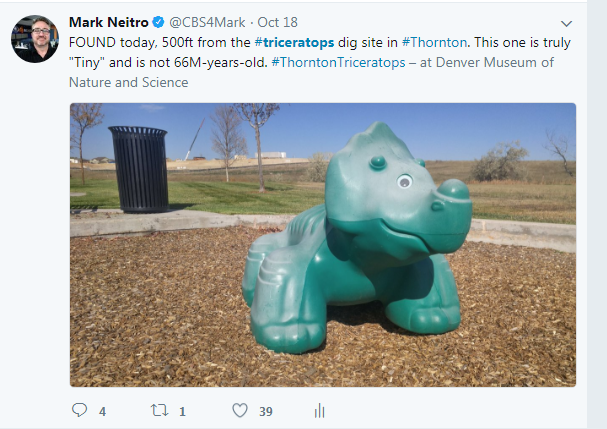
Dinosaurs on the brain.
I was not only dreaming about dinosaurs for 3 months, I started to notice them everywhere. I saw these two at a 3-year-old's birthday party.
Dust and plaster everywhere!
I still have dust all over the inside of my news vehicle. Everywhere.
Towards the end of the dig Natalie Toth told me that I needed to put down the camera and come help plaster one of the bones. I came home that night with plaster in my hair, under my fingernails, covering my clothes and all over the inside of my news unit. My wife shook her head when she found the trail of plaster and dust all over our house and in the laundry.
Here's what Maura O'Neal from the museum looked like after covering one of the bones in plaster.
There's still a spot of plaster on my lens hood. I'm keeping it as a reminder of the incredible experience I was able to document.
Equipment
Dust was in the cracks and crevices of my camera and I would have to clean the camera body daily. I would clean dirt from the lens every hour or so.
I shot a lot of video from a distance with my tripod. But, to get up close there's no room for a tripod with all of the people, equipment and 66 million-year-old bones scattered all over the ground. I would end up using the ground, my leg or just shouldering the camera to get the shot.
Not a Triceratops!?!???
Stan: The museum just called. It's not a triceratops.
Me: (mouth wide open) What? Stop messing with me, that's not funny.
After spending weeks editing, it's really hard to throw out hours and hours of work. Here's a photo of what my timeline looked like. 24 minutes of screen time with thousands of shots and effects.

Even though it was a lot of extra work, the change worked out perfectly. It made for a more interesting story and helped Stan weave a mystery throughout the piece.
RELATED: Reporter's Notebook: What Do You Mean It's Not A Triceratops?!
Pizza, drinks and sunscreen.
Paleontologists must eat a lot of pizza. They brought it in almost every day. Hot weather and daily pizza wasn't the best for my stomach. But, it was quick and easy since there was so much work to do. Luckily, there was a pizza place just a few blocks away. Could you imagine being on a dig site in the middle of nowhere in Utah and having to pack in your food, water and necessities for several weeks?
Water and Gatorade were always in a huge cooler and all of us tried to stay hydrated in the late summer Colorado heat.
Thornton's average elevation is around 5,351. Being a mile closer to the sun in August meant sunscreen was mandatory.
Patience
Sometimes a shot will just happen right in front you. This moment of a mom taking a rock from her son after he picked it up outside of the construction site just appeared in front of me and I happened to be recording.
Other times you have to wait. And wait. And wait. All the time recording just in case something happens. In this shot I was trying to get reactions to the find and after about 10 minutes was able to capture these two people at the site in awe of what they were seeing.
Teamwork
I typically work with a different reporter each day. For the past 3 months I've worked with Stan almost every day. In a way it's like a work marriage. We get on each other's nerves, bounce ideas off each other and shared in the excitement of the story.
After previewing the documentary for the museum, Stan and I gave each other a very forceful high-five. The tingling in my palm lasted for hours.
Watch CBS4's special airing at 6:30 p.m. on Dec. 8 titled "The Thornton Triceratops."
RELATED: Surprise! Paleontologist Says Thornton Triceratops Is Not Actually A Triceratops
